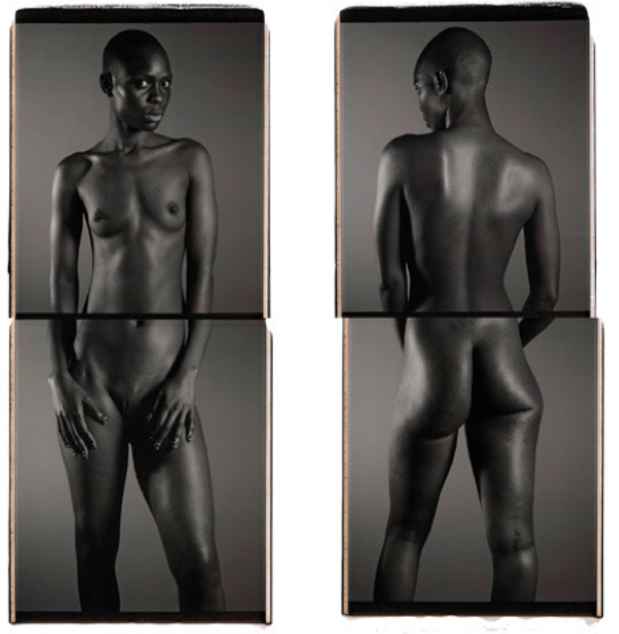Chuck Close “Nudes 1967-2014”
The Pace Gallery (534 W 25th St)

This event has ended.
Pace Gallery presents Chuck Close: Nudes 1967-2014. While renowned worldwide for more than five decades of portraiture, Close has in the same course of time investigated, experimented and explored another subject with equal virtuosity: the body.
Pace’s exhibition will feature Polaroids, daguerreotypes and an acrylic on canvas painting. Color and black & white single panels, diptychs, triptychs, and a five part reclining figure were all made using a 40-by-80 inch Polaroid camera and will be on view alongside the 10-by-21 foot Big Nude, a 1967 painting on loan from a private collection and never before exhibited publicly in New York. Working from black & white photographs, Close purged color from this large-scale painting of a reclining female nude. While this pose has been a motif in art history for centuries, Close’s use of the reclining figure is as much about the process as it is about the subject. In this monumental, masterful painting, Close employed a variety of techniques and tools ranging from traditional brush painting to airbrushing to razors and rags to execute the work.
A series of daguerreotypes made using the 19th century technique will also be on view. Close captured his subjects through the camera’s completely open large lens, resulting in a flood of light permeating the moment which decreases the depth of field and makes some areas appear out of focus. This challenge was not new to Close and in fact relates to an effect the artist purposefully incorporated into his paintings as early as the mid-1960s: highlighting the face, while allowing edges to blur. This approach requires the final image to be viewed section by section and therefore reestablishes the connection of the viewer to the process as a result.
Chuck Close’s very first solo exhibition, held in 1967 at the University of Massachusetts Art Gallery, Amherst, featured paintings, painted reliefs and drawings based on photographs of record covers and magazine illustrations. The exhibition captured the attention of the university administration, which promptly closed it, citing the male nudity as obscene. The American Civil Liberties Union (ACLU) and the American Association of University Professors (AAUP) came to the defense of Close, and a landmark court case ensued. A Massachusetts Supreme Court Justice decided in favor of the artist against the university. When the university appealed, Close chose not to return to Boston, and ultimately the decision was overturned by an appeals court. The original decision is cited regularly as the first decision to extend freedom of speech to visual arts. Close was later awarded an Honorary Doctorate of the Arts by the University of Massachusetts in 1995.
In the nearly 50 years that have elapsed since that exhibition, society’s perception and acceptance of the nude has changed. Viewers of Nudes 1967 – 2014 will see a record of body types spanning the latter half of the 20th century and the beginning of the 21st. As with his iconic portraits, Close’s photographs of the body are handled in an almost mug shot style, and yet he opens a window for the viewer to the life experience of the subject.
The accompanying exhibition catalogue will include an essay by Colin Westerbeck, who curated a critically acclaimed 1989 travelling exhibition of the artist’s nudes and flowers at the Art Institute of Chicago. In his new essay, Westerbeck recalls how Close referred to his photographs of the nude that comprised only the space between the shoulders and knees as “caryatids”. This suggestion of classicism, “a meditation on the human body,” reinforces the nudes’ sculptural quality, something not typically considered in Close’s oeuvre.
Media
Schedule
from February 28, 2014 to March 29, 2014